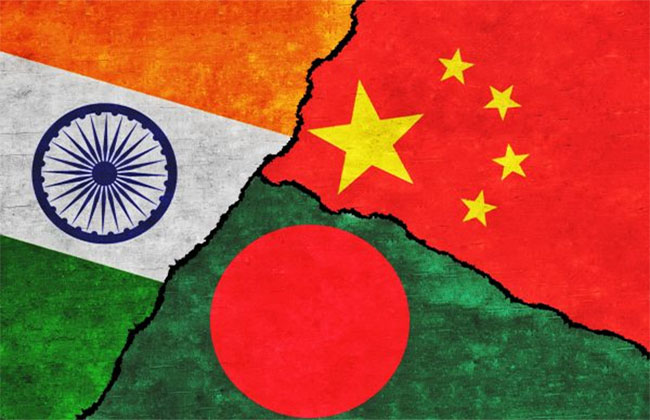
India’s relationship with China is complex and marked by both cooperation and conflict. Historically, the two nations share cultural ties and mutual influences, but their political relationship has been tense, especially over border disputes.
The primary source of tension is the unresolved border issues, particularly in areas like Aksai Chin (administered by China but claimed by India) and Arunachal Pradesh (administered by India but claimed by China). The 1962 Sino-Indian War was a significant conflict over these disputes. More recently, skirmishes like the 2020 Galwan Valley clash have escalated tensions.
Despite political tensions, India and China maintain significant trade relations. China is one of India’s largest trading partners, with bilateral trade reaching hundreds of billions of dollars. However, India has expressed concerns over the trade deficit and dependency on Chinese manufacturing.
Both countries vie for influence in Asia and the Indo-Pacific region. India is part of strategic groupings like the Quad (with the US, Japan, and Australia), which China views as an attempt to contain its rise.
Over the years, India and China have engaged in high-level diplomatic talks to manage tensions, including border agreements and mechanisms for conflict de-escalation. However, progress is often slow due to mutual distrust.
Both nations participate in global platforms like BRICS, the Shanghai Cooperation Organization (SCO), and the G20, where they collaborate on economic and climate issues despite bilateral tensions.
Cultural exchanges, tourism, and academic collaborations continue, though they are affected by political tensions.The India-China relationship is a mix of competition, cautious cooperation, and ongoing efforts to manage conflicts peacefully. The future of this relationship largely depends on diplomatic dialogue and the resolution of border disputes.
Bangladesh has historically maintained a careful and balanced approach in its relationship with both India and China. While India and China have had a complicated and often tense relationship, Bangladesh has sought to foster positive ties with countries, emphasizing economic cooperation and regional stability.
Regarding India-China tensions, Bangladesh typically advocates for peaceful resolution of disputes through dialogue. Bangladesh values its close relationship with India, given their geographical proximity, shared cultural ties, and significant economic and security cooperation. However, Bangladesh also maintains strong economic relations with China, benefiting from Chinese investments in infrastructure, trade, and development projects under China’s Belt and Road Initiative (BRI).
In the context of India and China’s rivalry, Bangladesh generally aims to avoid taking sides, focusing instead on enhancing its own development goals and regional connectivity. Bangladesh has supported platforms like the South Asian Association for Regional Cooperation (SAARC) and Bay of Bengal Initiative for Multi-Sectoral Technical and Economic Cooperation (BIMSTEC) to promote regional cooperation and stability.
India typically views high-level visits between Bangladesh and China with cautious attention, given the geopolitical dynamics in South Asia. India and Bangladesh share strong historical, cultural, and economic ties, and India is keen on maintaining its influence in Bangladesh.
China’s growing engagement with Bangladesh, especially in areas like infrastructure development and investments under the Belt and Road Initiative (BRI), is often seen by India as part of China’s broader strategy to expand its presence in South Asia. India might perceive the interim government head of Bangladesh’s visit to China as a move that could shift Bangladesh closer to China’s sphere of influence, potentially impacting India’s strategic and economic interests in the region.
However, India is likely to respond by reinforcing its bilateral relations with Bangladesh, emphasizing shared historical ties, regional connectivity projects, and cooperation in trade and security. India typically balances its approach by engaging diplomatically while being attentive to China’s increasing footprint in neighboring countries.
Professor Muhammad Yunus, renowned for his work in microfinance and social business, visiting China as the interim head of Bangladesh could have several implications from India’s perspective. India closely monitors Bangladesh’s political developments due to their shared borders, historical ties, and economic relations.
India might view this visit with cautious interest. On one hand, India maintains strong bilateral relations with both Bangladesh and China, and Professor Yunus’s visit could be seen as part of Bangladesh’s efforts to engage with key global players for economic and developmental support. On the other hand, India could be wary of China’s increasing influence in Bangladesh, given China’s broader strategic interests in South Asia through its Belt and Road Initiative (BRI) and regional partnerships.
India may respond by reinforcing its diplomatic and economic ties with Bangladesh, emphasizing shared cultural and historical connections, and possibly increasing development assistance or bilateral trade engagements to maintain its influence in Bangladesh. India would likely continue to support Bangladesh’s sovereignty and political stability while ensuring that its own strategic interests in the region are safeguarded.
In summary, Bangladesh strives to balance its relationships with both India and China, prioritizing economic growth and regional peace while steering clear of entanglement in India-China rivalries.
Shahidul Alam Swapan is a Geneva-based private banking financial crime compliance expert and columnist.


